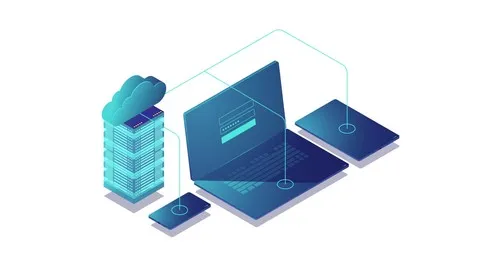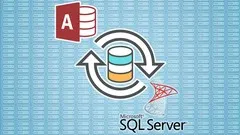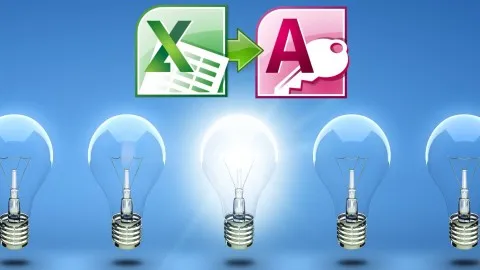
How to Migrate Your Access Database to the Cloud With Caspio 
This free course provides step-by-step instructions on how to migrate an Access database to the cloud using Caspio's point-and-click user interface. Learn how to create a website application with ease. ▼
ADVERTISEMENT
Course Feature
![]() Cost:
Cost:
Free
![]() Provider:
Provider:
Udemy
![]() Certificate:
Certificate:
No Information
![]() Language:
Language:
English
![]() Start Date:
Start Date:
Self Paced
Course Overview
❗The content presented here is sourced directly from Udemy platform. For comprehensive course details, including enrollment information, simply click on the 'Go to class' link on our website.
Updated in [March 06th, 2023]
This course provides an overview of how to migrate an Access database to the cloud with Caspio. Participants will learn how to create fantastic website applications without having to know how to code. Topics covered include creating a Caspio account, connecting to an Access database, and creating a web application. Participants will also learn how to use Caspio's features to enhance their web applications. By the end of the course, participants will have a better understanding of how to migrate an Access database to the cloud with Caspio and create powerful web applications.
[Applications]
The application of this course can be seen in the ability to migrate an Access database to the cloud with Caspio. This course provides the necessary steps to do so, including creating a Caspio account, connecting to the Access database, and creating a data page. After completing this course, users will be able to create fantastic website applications without having to know how to code. Additionally, users will be able to use Caspio to create dynamic web forms, reports, and dashboards. This course is a great way to get started with Caspio and to take advantage of the power of the cloud.
[Career Paths]
1. Cloud Database Administrator: Cloud database administrators are responsible for managing and maintaining cloud-based databases. They ensure that the data is secure, up-to-date, and accessible to users. As cloud computing continues to grow in popularity, the demand for cloud database administrators is expected to increase.
2. Web Developer: Web developers use coding languages such as HTML, CSS, and JavaScript to create websites and web applications. With the help of Caspio, web developers can quickly and easily create dynamic web applications without having to write code from scratch.
3. Business Intelligence Analyst: Business intelligence analysts use data to help organizations make better decisions. With Caspio, they can quickly and easily access data from cloud-based databases and use it to create reports and dashboards.
4. Data Scientist: Data scientists use data to uncover insights and trends. With Caspio, they can access data from cloud-based databases and use it to create predictive models and machine learning algorithms.
[Education Paths]
1. Bachelor of Science in Computer Science: This degree path provides students with the knowledge and skills to develop, design, and maintain computer systems and software. Students learn how to use programming languages, such as Java, C++, and Python, to create applications and websites. With the increasing demand for cloud-based applications, this degree path is becoming increasingly popular as it provides students with the skills to migrate Access databases to the cloud with Caspio.
2. Bachelor of Science in Information Technology: This degree path focuses on the use of technology to store, manage, and protect data. Students learn how to use databases, networks, and security systems to ensure data is secure and accessible. With the rise of cloud computing, this degree path is becoming increasingly popular as it provides students with the skills to migrate Access databases to the cloud with Caspio.
3. Bachelor of Science in Web Development: This degree path focuses on the design and development of websites and web applications. Students learn how to use HTML, CSS, JavaScript, and other web development languages to create websites and applications. With the increasing demand for cloud-based applications, this degree path is becoming increasingly popular as it provides students with the skills to migrate Access databases to the cloud with Caspio.
4. Bachelor of Science in Cloud Computing: This degree path focuses on the use of cloud computing technologies to store, manage, and protect data. Students learn how to use cloud computing platforms, such as Amazon Web Services, Microsoft Azure, and Google Cloud Platform, to create and manage cloud-based applications. With the increasing demand for cloud-based applications, this degree path is becoming increasingly popular as it provides students with the skills to migrate Access databases to the cloud with Caspio.
Pros & Cons

Easy to understand explanations and examples

Makes migrating apps to the web easy

Fantastic course and amazing experience

Detailed tutorial

None mentioned
Course Provider

Provider Udemy's Stats at AZClass
Discussion and Reviews
0.0 (Based on 0 reviews)
Explore Similar Online Courses

Introduction to TDD in C#

Urdu Language Script Learning

Python for Informatics: Exploring Information

Social Network Analysis

Introduction to Systematic Review and Meta-Analysis

The Analytics Edge

DCO042 - Python For Informatics

Causal Diagrams: Draw Your Assumptions Before Your Conclusions

Whole genome sequencing of bacterial genomes - tools and applications

Upsize Your MS Access Business Information to MS SQL Server

Intro to Access - Microsoft Access Basics for Beginners


Start your review of How to Migrate Your Access Database to the Cloud With Caspio